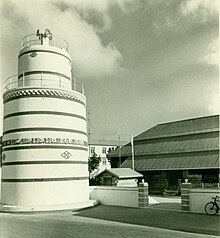Malé Friday Mosque
| Malé Friday Mosque | |
|---|---|

Male Friday Mosque minaret
|
|
| Basic information | |
| Location | Malé, Maldives |
| Geographic coordinates | 04°13′05″N 073°32′37″E / 4.21806°N 73.54361°ECoordinates: 04°13′05″N 073°32′37″E / 4.21806°N 73.54361°E |
| Affiliation | Islam |
| Territory | Malè |
| State | Kaafu Atoll |
| Architectural description | |
| Architectural style | Traditional Islamic architecture |
| Completed | 1658 |
The Malé Friday Mosque or the Malé Hukuru Miskiy (Dhivehi: މާލެ ހުކުރު މިސްކިތް) also known as the Old Friday Mosque is one of the oldest and most ornate mosques in the city of Malé, Kaafu Atoll, Maldives. Coral boulders of the genus Porites, found throughout the archipelago, are the basic materials used for construction of this and other mosques in the country because of its suitability. Although the coral is soft and easily cut to size when wet, it makes sturdy building blocks when dry. The mosque was added to the tentative UNESCO World Heritage cultural list in 2008 as unique examples of sea-culture architecture.
The mosque is opposite the Medhuziyaaraiy and the Muliaage in Malé. The Medhuziyaaraiy is the tomb of Al-Hafiz Abul Yoosuf Al-Barbari of Morocco , who converted Maldives into Islam in 1153 AD. It is adjacent to the Muliaage.
The mosque was built in 1658, during the reign of Ibrahim Iskandar I (1648–1687). It was built over an earlier mosque constructed in 1153 by the first Muslim Sultan of Maldives, Mohamed Bin Abdullah, after his conversion to Islam. Although the older mosque was reportedly refurbished by Ahmed Shihabuddeen in 1338, there are no written records attesting this. In 1656, Iskandar began building a new mosque when the old one became too small to accommodate the increasing number of devotees. Its construction, which took one-and-a-half years, was completed in 1658. Built primarily of coral, the mosque originally had a thatched roof (common during the period). After his 1668 Hajj, Ibrahim I began building a munnaaru (minaret) and a gate at the southern end of the mosque. The minaret, patterned on those at the entrance to Mecca, is surrounded by a 17th-century cemetery with intricately-carved tombstones and mausoleums.
...
Wikipedia

